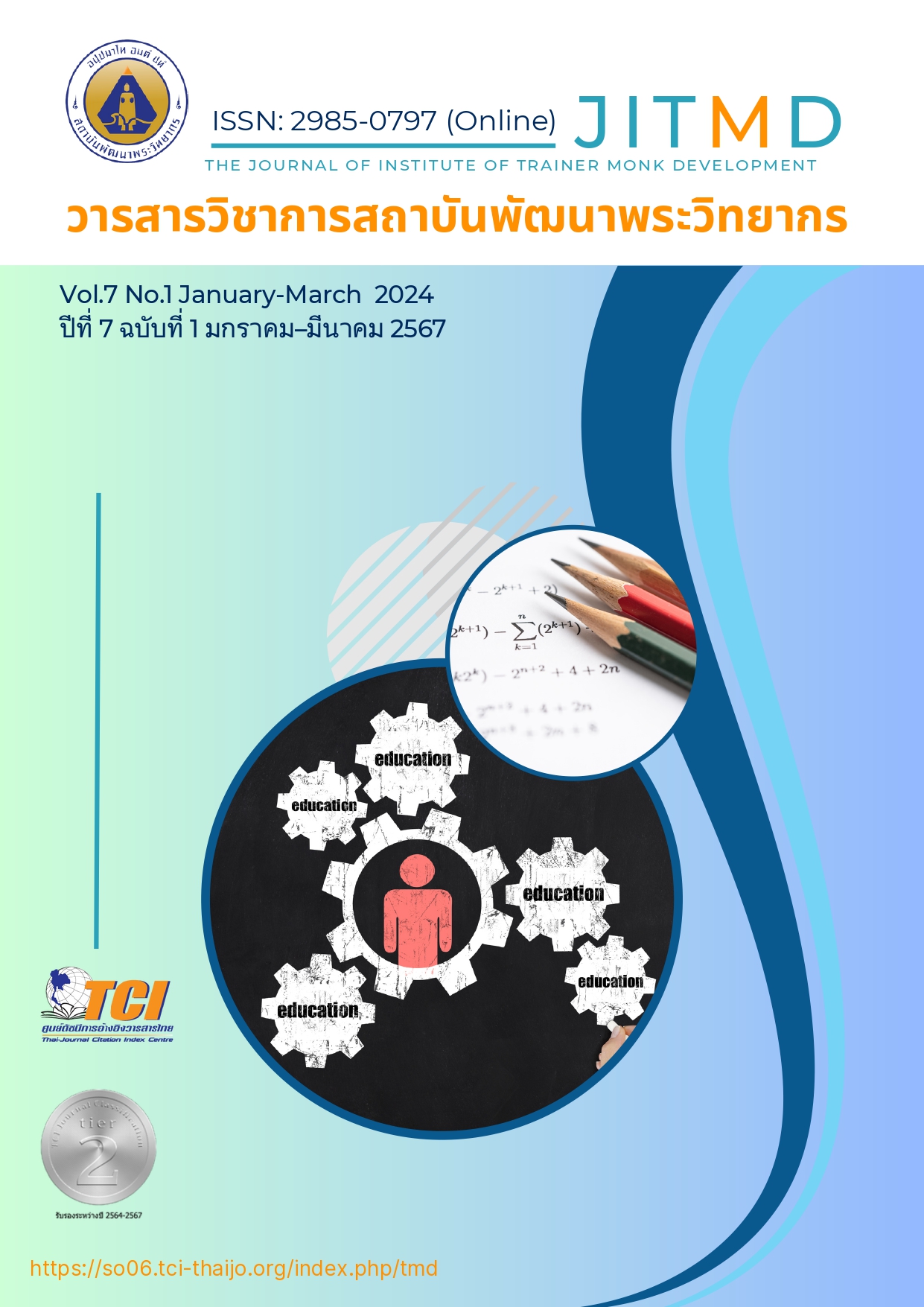Learning Organization of Krathumbaen “Wisetsamutthakun” School
Main Article Content
Abstract
The purpose of this research was to find out; 1) Learnig organization of Krathumbaen “Wisetsamutthakhun” school 2) the developmental guidelines of Learnig organization of Krathumbaen “Wisetsamutthakhun” school. The simple were 86 personnel. The research tools were an opinionnaire and interview form. Statistics used in data analysis were frequency, percentage, arithmetic mean, standard deviation and content analysis. The results found: 1. The learning organization of Krathumbaen “Wisetsamutthakhun” in overall and each aspect were at high level. Sorted by arithmetic means, in descending order; knowledge management, organization transformation, learning organization, people empowerment and technology application. 2. There were developmental guidelines of learning organization of Krathumbaen “Wisetsamutthakhun”. 1) School personnel learn from work, and Bring knowledge to exchange together with members in the organization. 2) School director support and give opportunities to personnel in the school exchange knowledge. School director support to personnel in the school self-development always. 3) There is clear communication within the school. 4) There is a decentralization of workload to everyone in the organization. 5) Information is stored. Systematically. 6) The use of technology in work is promoted, internal communication and published works. 7) Let the community take part in policy making, School curriculum, and School activities. 8) Apply information, news, processes, and best practices to apply in the operations of the organization.
Article Details

This work is licensed under a Creative Commons Attribution-NonCommercial-NoDerivatives 4.0 International License.
บทความที่ได้รับการตีพิมพ์เป็นลิขสิทธิ์ของวารสารวิชาการสถาบันพัฒนาพระวิทยากร
ข้อความที่ปรากฎอยู่ในบทความที่ได้รับการตีพิมพ์ในวารสาร ถือเป็นความรับผิดชอบของผู้เขียนบทความ และข้อคิดเห็นนั้นไม่ถือว่าเป็นทัศนะและความรับผิดชอบของกองบรรณาธิการวารสารวิชาการสถาบันพัฒนาพระวิทยากร
References
กระทรวงศึกษาธิการ. (2561). ประกาศกระทรวงศึกษาธิการเรื่อง ให้ใช้มาตรฐานการศึกษา ระดับปฐมวัย ระดับการศึกษาขั้นพื้นฐาน และระดับการศึกษาขั้นพื้นฐานศูนย์การศึกษาพิเศษ. ประกาศลงวันที่ 6 สิงหาคม 2561. กรุงเทพฯ: อักษรเจริญทัศน์ จำกัด.
งานจัดการความรู้ คณะแพทย์ศาสตร์ ศิริราชพยาบาล. (2551). องค์กรแห่งการเรียนรู้เป็นอย่างไร
รู้ได้อย่างไร?. สืบค้นข้อมูลเมื่อวันที่ 18 เมษายน 2566 จาก https://www2.si.mahidol.ac.th/km/knowledgeassets/kmexperience/kmarticle/4134/.
พวงรัตน์ ทวีรัตน์. (2540). วิธีการวิจัยพฤติกรรมศาสตร์และสังคมศาสตร์. (พิมพ์ครั้งที่ 7). กรุงเทพฯ: สำนักทดสอบทางการศึกษาและจิตวิทยา มหาวิทยาลัยศรีนครินทรวิโรฒประสานมิตร.
มารยาท โยทองยศ และปราณี สวัสดิสรรพ์. (2544). การกำหนดขนาดของกลุ่มตัวอย่างเพื่อการวิจัย. กรุงเทพฯ: ศูนย์บริการวิชาการ สถาบันส่งเสริมการวิจัยและพัฒนานวัตกรรม.
เมฐยา แย้มโชติ. (2556). การเป็นองค์การแห่งการเรียนรู้ของสำนักงานปลัดกระทรวงเกษตรและสหกรณ์. วิทยานิพนธ์ภาควิชารัฐประศาสนศาสตร์. บัณฑิตวิทยาลัย มหาวิทยาลัยศิลปากร.
วราภรณ์ ปานเพ็ชร. (2560). องค์การแห่งการเรียนรู้ของโรงเรียนวัดดอนมะนาว. การค้นคว้าอิสระการบริหารการศึกษา. บัณฑิตวิทยาลัย มหาวิทยาลัยศิลปากร.
วีรภัทร รักชนบท. (2561). องค์กรแห่งการเรียนรู้ของโรงเรียนวัดไร่ขิงวิทยา สังกัดสำนักงานเขตพื้นที่การศึกษามัธยมศึกษา เขต 9. การค้นคว้าอิสระ การบริหารการศึกษา. บัณฑิตวิทยาลัย มหาวิทยาลัยศิลปากร.
สุชาดา รักอก. (2565). แนวทางการพัฒนาองค์การแห่งการเรียนรู้ของโรงเรียนบรมราชินีนาถราชวิทยาลัย. การค้นคว้าอิสระการบริหารการศึกษา. บัณฑิตวิทยาลัย มหาวิทยาลัยศิลปากร.
สำนักงานคณะกรรมการการศึกษาแห่งชาติ. (2545). พระราชบัญญัติการศึกษาแห่งชาติ พ.ศ.2542 และที่แก้ไขเพิ่มเติม (ฉบับที่ 2) พ.ศ.2545. กรุงเทพฯ: พริกหวานกราฟฟิค.
สำนักงานเลขาธิการสภาการศึกษา. (2560). แผนพัฒนาการศึกษาแห่งชาติ พ.ศ. 2560–2579. กรุงเทพฯ: พริกหวานกราฟฟิค.
Michael J. Marquardt. (2002). Building the Learning Organization: A System Approach to Quantum Improvement and Global Success. (Palo Alto CA: Davies-Black Publishing, Inc.


